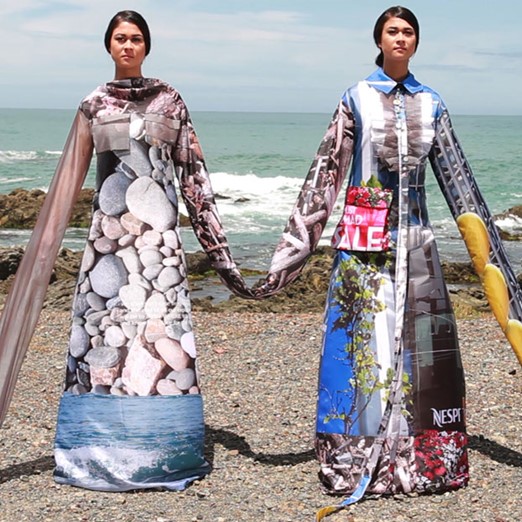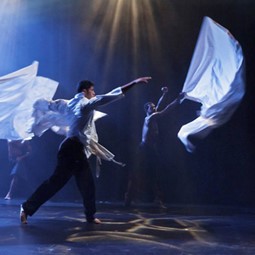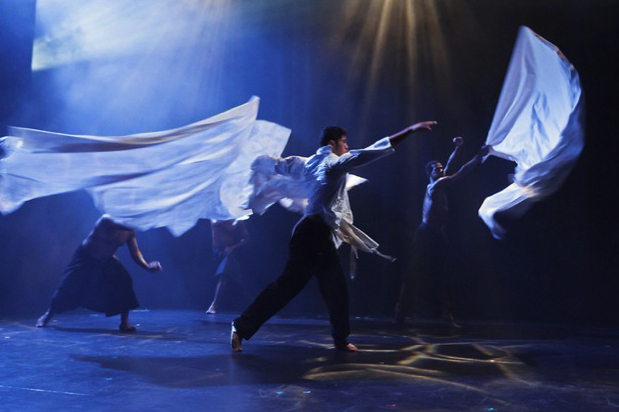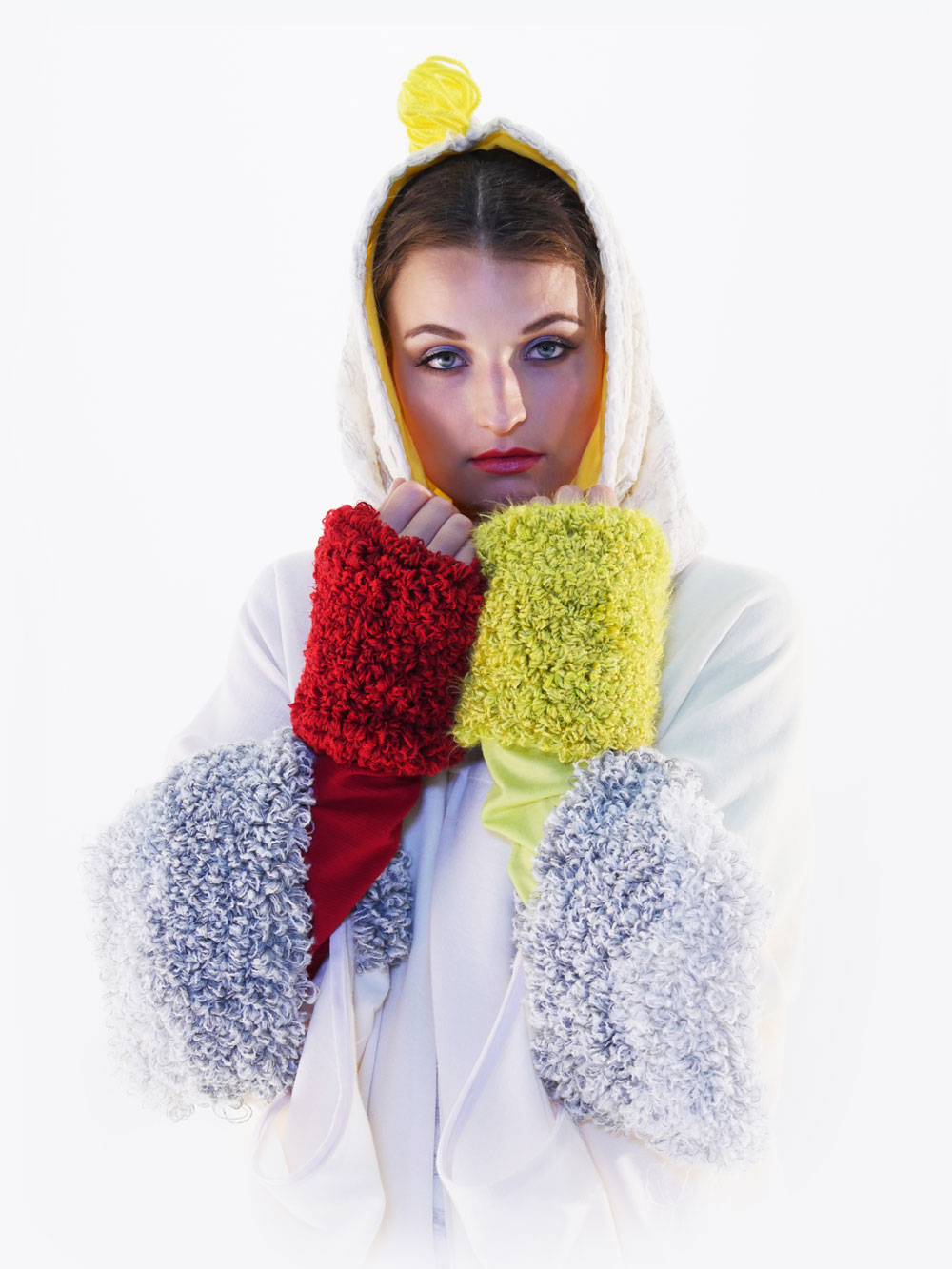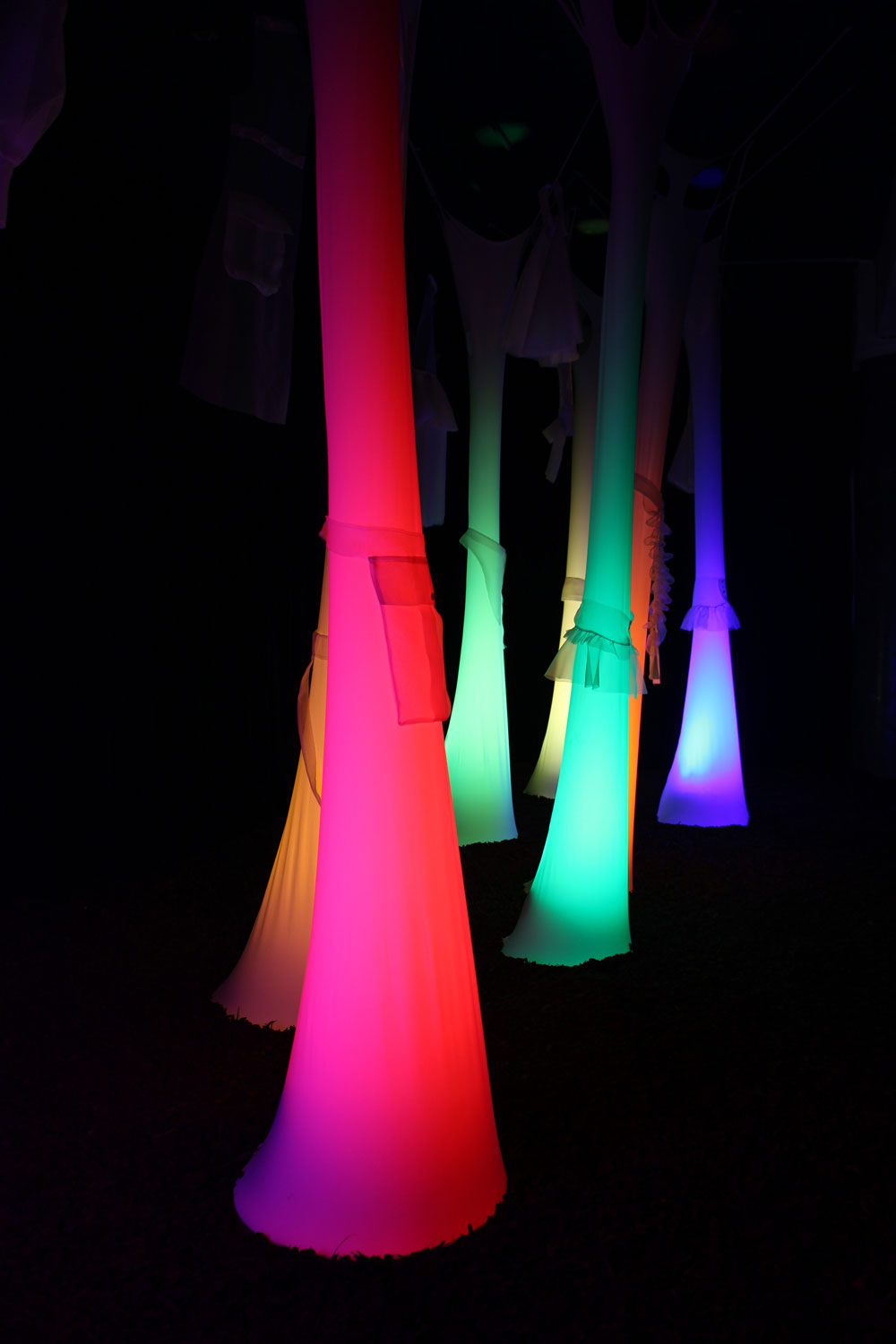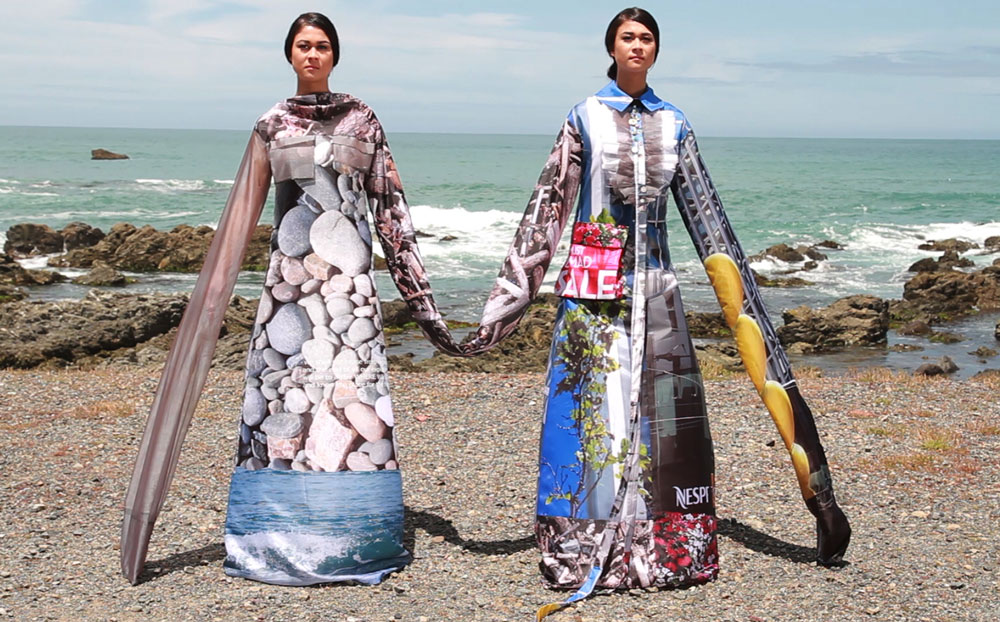Prescott, S. (2015). Seeing Sound, Hearing Light 2. [two garments made of digitally printed fabric and including audio-responsive LED lighting and a sound track]. Critical Costume 2015:New Costume Practices and Performances Exhibition (and catalogue): Aalto University School of Arts, Design and Architecture, Helsinki, Finland.
Seeing Sound, Hearing Light 2 captures the integration of diverse digital technologies and connections between wearer, environment and clothing. Building upon my research on visualisation of the senses where fashion is understood as a medium, digital photographic images printed onto silk fabrics were created as conjoined garments. Audio responsive LED lighting and audio files embedded into the clothing triggered lighting responses relative to the printed urban and coastal fabric imagery, which connected environments whilst visually depicting sound and light. These connections between environments were revisioned in a video of the garments worn in each place of inception, and projected alongside the garments.
Prescott, S. (2017). Global Nomad [five designs made of wool based fabrics and yarns, LED lighting, embroidery threads, furniture]. Red Dot Exhibition 2017 (group exhibition), Red Dot Museum, Singapore.
Global Nomad, an outfit of clothing that transforms from the body into a portable sanctuary, and is concerned with adaptable and sustainable fashion and its relation to global issues of social and economic migrancy. The wearer removes layers of clothing, each layer constituting an element of the shelter, to create an immersive sensory experience of a predominantly haptic and visual nature. The shelter is speedily constructed using two universally available standard chairs for support. Botanical references digitally embroidered onto Merino fabrics connect the wearer with nature and place. Global Nomad won the Habitat category at the International 2017 Red Dot Design Awards, receiving a 'Best of the Best' award and inclusion in the physical and online exhibitions and accompanying catalogue.
Prescott, S., Nawalowalo, N., Farr, G., Kieve, P., McCrory, T., Westra, A., . . . Veikoso, L. (2013). Masi [costume designs for stage: mixed media]. Sydney International Festival 2013, Everest Theatre, Sydney, Australia: The Conch, Pacific Theatre Comapny.
Costume designer for Masi, a piece of visual theatre performed at the International Festival of the Arts in New Zealand in 2012, and Sydney Festival in January 2013. Alongside director Nina Nawalowalo and British illusionist Paul Kieve, costumes were designed to unfold a rich journey of discovery exploring loss, memory and identity, through the use of texture, line and illusion.
Prescott, S. (2017). Fashion Perennials [fourteen designs made of various fabrics and LED lighting]. LUX Light Festival, Civic Square, Wellington, New Zealand.
Fashion Perennials. a fashion installation for the LUX Light Festival in Wellington, New Zealand, contributed to discourse on the harsh environmental impact of the current fashion industry. Engaging tension and disproportion to denote over consumption and environmental negligence, suspended silk organza garment components imitated natural growth from taut fabric tree-like structures to emphasise conscious fashion consumption and a replenishment of natural resources. Garment components can be assembled, disassembled and re-assembled into multiple clothing combinations, a feature that elicited a sustainable use of resources and reuse in the fashion system.
Supported by a PopCAANZ Exhibition Grant.
Exhibition location: Former Capital E building, adjacent to Wellington City Art Gallery.



